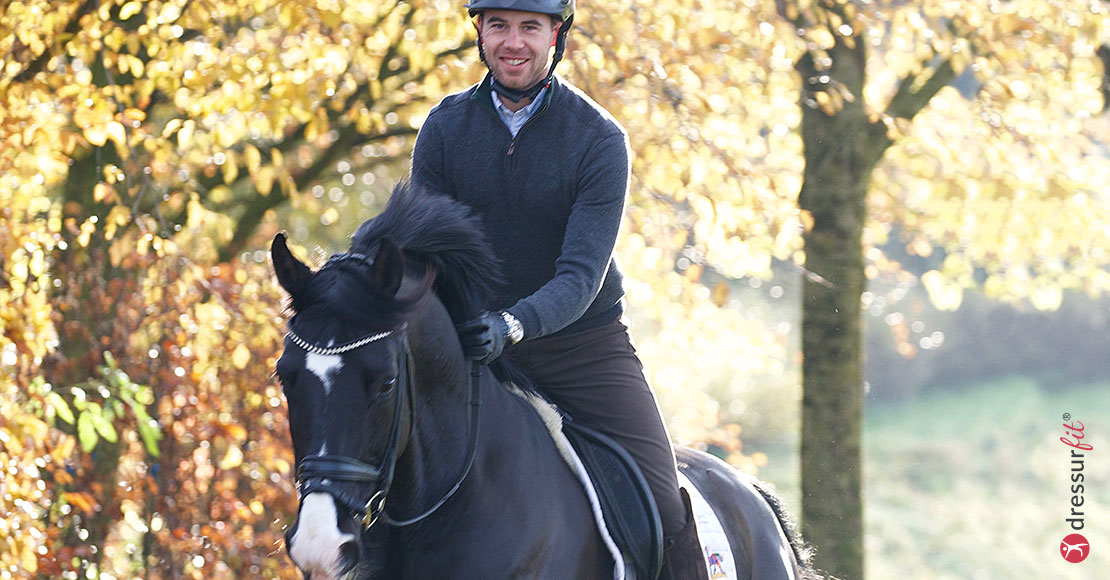
Find real control by letting go when riding
Having control when riding has nothing to do with forcing your horse to do something or forcing it into a particular shape. Being in control when riding a horse involves two things: on the one hand, that the rider is able to determine and guide the horse’s pace, direction and sequence of movements, and on the other hand, that the rider is able to make conscious, targeted use of their own body. That might sound strange to start with, but you achieve this control by letting go – both when you “let go” of your horse and when you let go of yourself mentally. This means that your mind is free of any distractions, enabling you to focus on your training and to sit in a balanced and relaxed manner with sufficient positive body tension, but without clenching your muscles or tensing up.
What does “letting go” mean for the horse?
As far as the horse is concerned, “letting go” means that the rider manages to influence the horse through the use of go-forward riding aids, to collect it and to help it shift weight onto its hindquarters lifting the withers, so that the horse can push forward through his body with a swinging back into a good contact without being “held” by the rider. The rider achieves this through a balanced seat, using their seat and legs as go-forward aids while maintaining a soft contact to the horse’s mouth.
If the rider tries to achieve something by pulling on the reins or applying constant leg pressure, they will always achieve the opposite. If the rider attempts, for example, to control an energetic horse with a major urge to move forward by pulling on the reins, the horse will only react all the more vigorously. Or if the rider attempts to “force the horse into a round shape”, the horse will lean on the reins instead of shifting his weight to his hindquarters.
But if the horse is ridden from “back to front” with active hind legs pushing into a soft contact and self carriage, the rider can sit deep and quietly in the saddle, “let go” and guide the horse with their seat.
How do I get the horse to let go?
The prerequisites are sufficient positive body tension and enough core stability to not let yourself be swayed too much by the horse’s movements, as well as sufficient flexility of your hips, ankles and shoulders, in order to be able to sit relaxed and deep in the saddle following your horse’s movements and guide it with your seat. You can test, whether your horse goes in self-carriage by giving and retaking the reins, i.e. moving your hands forwards along the horse’s neck for two or three strides. If your horse moves with correct self-carriage, it won’t change its outline or pace. Giving and retaking the reins can be done with both hands or just your inside hand, for example to test for correct bend in a corner or on a curved line. World Cup rider Benjamin Werndl explains in the interview what control has to do with a horse’s hind legs and how fundamentally important it is to let go in the saddle.
Become a DressurFit® Member: Register now and start with your FREE fitness test!
